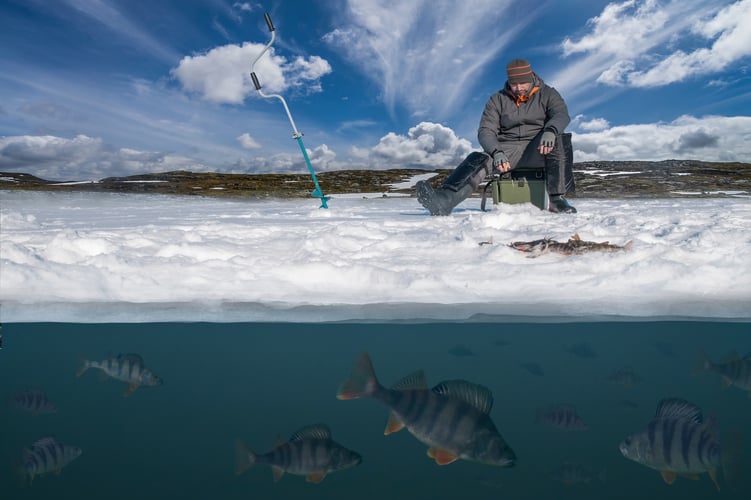Trout fishing is a local staple for many here in the Eagle River Valley. The al-lure of premier summer fishing brings a constant stream of tourists, local anglers, and hungry wildlife. Hunting and fishing bring in roughly 3.25 billion dollars to the state of Colorado every year, but then why are rivers seemingly devoid of both fish and anglers during the winter months?
Just like us, our fishy friends change their behavior come fall and winter. To understand what happens to fish in the winter, we must first understand what happens to our waterways. Lakes and rivers rapidly change and opportunities for food and shelter become scarce. Because the water in rivers moves much more quickly, ice often forms in slower moving, shallow water along banks. This shore ice spreads towards the center from both directions, growing larger as smaller chunks of floating ice adhere to it. This either leaves an uncovered section in the middle, or creates a cover over the entire river, which is currently the case with much of the Eagle River.

This winter, whether you fish in our lakes, rivers, or forego it altogether, remember to recreate responsibly and to be safe.
This surface ice provides cover for trout from potential predators. However, predation is not the only danger. Floating ice particles can adhere to the bottom of the river, rapidly expanding and killing or crowding out fish2. This is known as anchor ice, and greatly affects where trout choose to make their winter homes. To avoid anchor ice formation, many trout begin migrating downstream around September and may move up to a mile away from summer feeding grounds. For their winter homes, trout tend to favor large, deep, slow-moving pools, often with lots of fallen trees and rock cover3. Because suitable habitat is often limited, these areas can quickly become crowded, with numbers reaching well over 100 trout per pool.
Another behavioral change trout undergo is modifying the timing of their activity. During the summer, trout are mainly diurnal, feeding and remaining active through the day. In the winter, however, this flips and trout become primarily nocturnal. During the day they remain mostly inactive, hiding close to the riverbed in areas of low flow. As night approaches they become more active, moving closer to the surface and turbulent waters where they subsequently increase their feeding. Even though they move up the water column in the evening, trout often prefer to eat food floating nearer to the riverbed to reduce energy demands.
Similar to how trout modify their behavior in rivers, trout distribution in lakes also changes from the summer due to changing temperature and oxygen levels. In the summer, the water at the bottom of a lake is cool and low in oxygen, supporting less life. During the winter however the top layer of water cools and sinks, causing what's known as a temperature inversion. As the water cycles, the whole lake becomes oxygenated and able to support life. This leads to fish being distributed throughout the lake at all layers, meaning more habitat for fish, and more opportunities for ice fishing at all depths!
This winter, whether you fish in our lakes, rivers, or forego it altogether, remember to recreate responsibly and to be safe. Fishing licenses can be purchased from the Colorado Parks and Wildlife website, where proceeds go towards maintaining and improving the management of our fisheries and natural public use areas.
Pierce Gannon is a naturalist at Walking Mountains who is very sad that the Eagle River doesn’t have good fishing right now.







